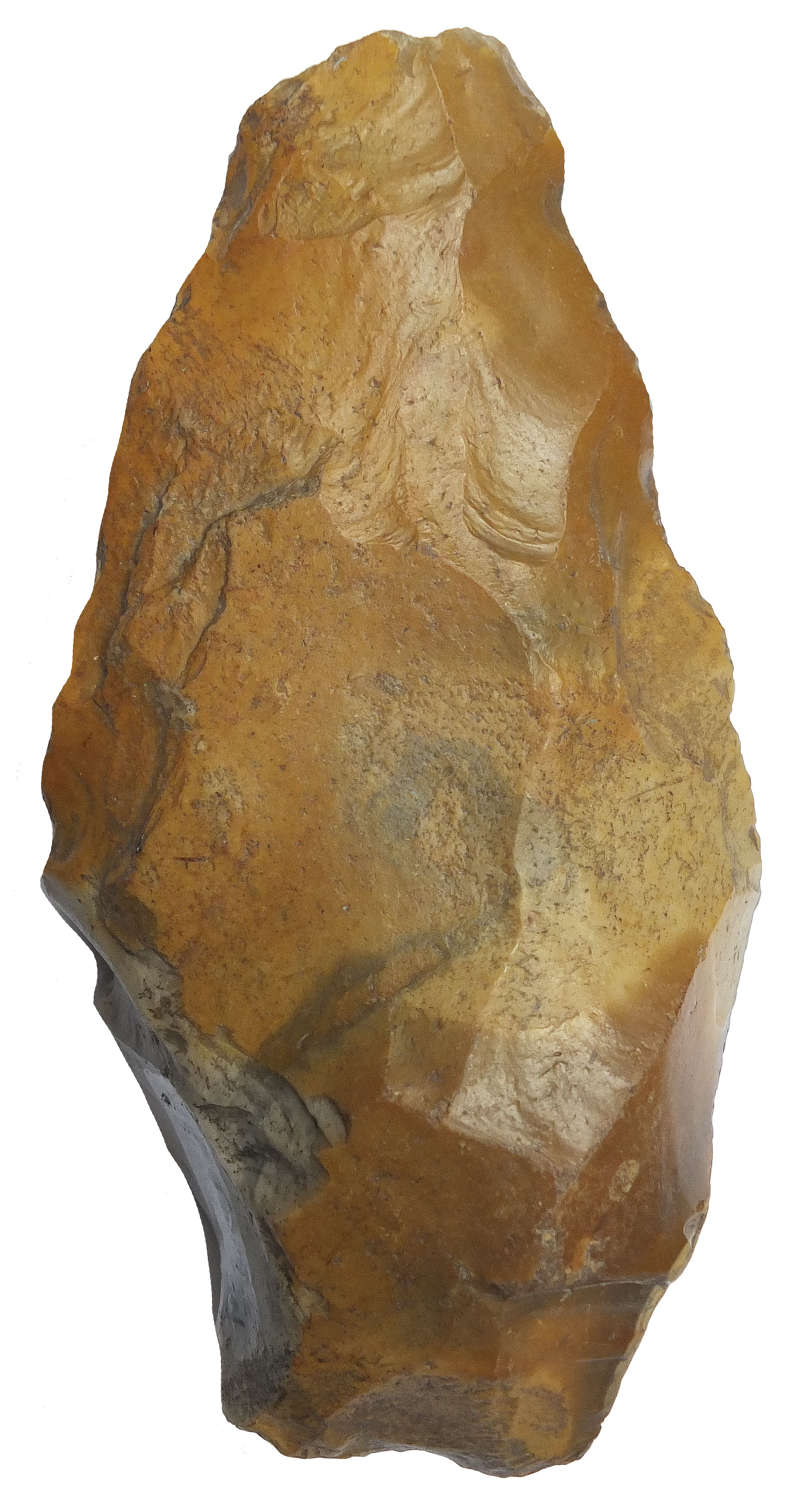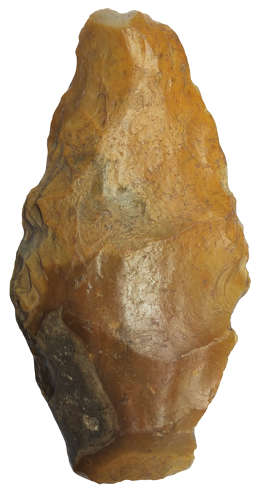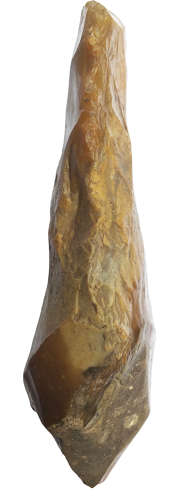Description: A grey flint triangular pointed handaxe with a dull orange brown patina, some inoffensive wear, a chip to the tip and a large chip on the lower part of one side close to the butt, but overall a nice example. Found near the Trundle, West Dean, West Sussex.
Size: 150 mm/5.9 ins. in length
Culture: Lower Palaeolithic
Date: c. 200,000-400,000 years B.P.
Provenance: A relatively recent surface find.
Notes: Roe (1968) records 50 handaxes from the foot of Trundle Hill (including surface finds and some from raised beach deposits).
The Trundle is an Iron Age hill fort about 5 km (3 miles) north of Chichester, Sussex, and is one of the best known landmarks on the South Downs. The fort was built over a Neolithic causewayed enclosure of which little remains. Local folklore tells of a golden calf buried on the hill protected by the devil himself. It is thought that this tale may have its origin from the Reformation with persecuted Catholics hiding valuable church objects. Early Protestants linked the devil to Catholics and their form of worship. Another tale tells that Viking raiders buried their loot on the Trundle prior to the battle of Kingley Vale in 894 A.D.
References: Roe, D.A. (1968) A Gazetteer of British Lower & Middle Palaeolithic Sites, CBA Research Report 8, Council for British Archaeology, p. 300.
IMPORTANT NOTE: A UK export license will be needed to export this item outside of the United Kingdom. We can apply for this on the behalf of foreign buyers for no extra charge, but this will delay despatch.



